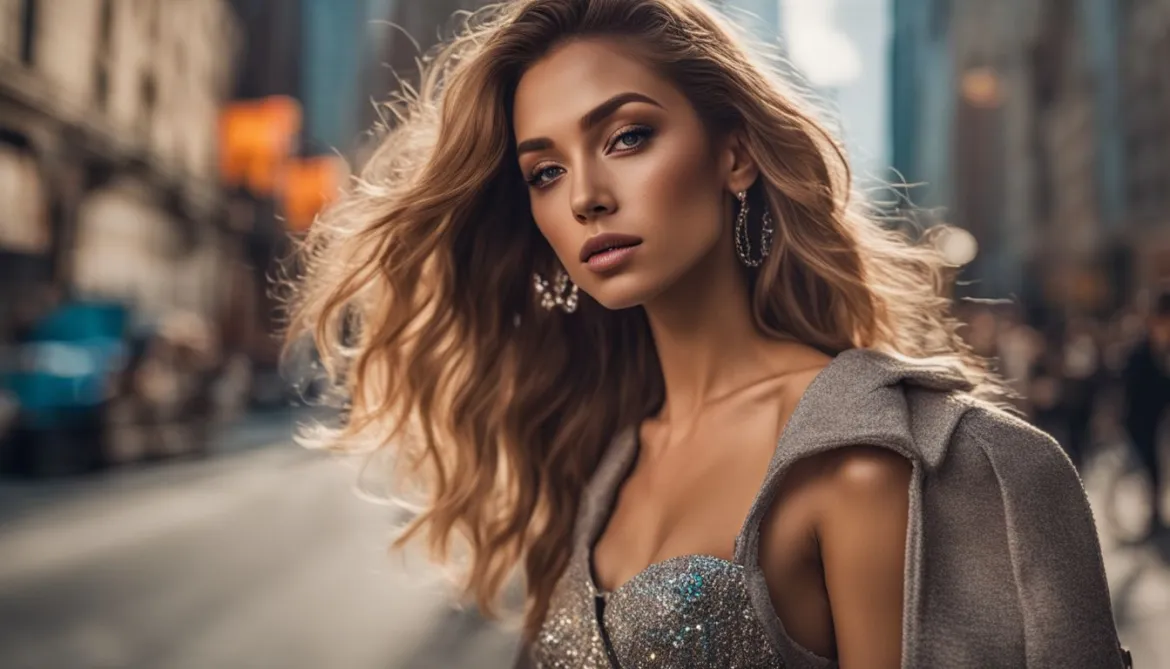Welcome to our exploration of the art of narrative photography, where we delve into the captivating world of storytelling through images. Visual storytelling is a powerful tool that allows photographers to convey compelling narratives and evoke emotions through their photographs. This article will guide you through the key elements of narrative photography, from composition and sequencing to conveying emotions and incorporating environmental context. By mastering these techniques, you can become a skilled storyteller and connect with your audience on a deeper level.
Key Takeaways:
- Visual storytelling in photography is the art of crafting narratives through images.
- Understanding the basic elements of storytelling and composition is crucial for creating compelling narratives.
- Conveying emotions through images adds depth and resonates with viewers.
- Sequencing images effectively creates a cohesive visual story.
- Composition plays a vital role in guiding the viewer’s gaze and creating a narrative within the frame.
The Elements of Visual Storytelling in Photography
Visual storytelling in photography goes beyond mere documentation, capturing moments, emotions, and the essence of a subject or scene. By applying the basic elements of storytelling, such as characters, plot, setting, and conflict, photographers can create engaging narratives through their images.
Composition and framing play a crucial role in guiding the viewer’s gaze and bringing the narrative to life within the frame. It is through careful positioning and arrangement of visual elements that photographers can craft a story and evoke emotions in their viewers.
When creating a narrative with photography, it’s important to consider the environmental context surrounding the subject. The background and surroundings can add depth and meaning to the image, providing additional layers to the story being told. By incorporating these elements, photographers can create a more immersive and impactful storytelling experience.
To create a narrative with photography, conveying emotions is key. From capturing joy and happiness to portraying sorrow and despair, photographers can utilize various techniques to evoke specific emotions in their viewers. Light, shadow, and color theory can all be used to enhance the mood and impact of the narrative.
By combining these narrative photography techniques, photographers can unlock the power of visual storytelling and create captivating stories that resonate with their audience.
“Photography is a language that speaks volumes through visual storytelling. By understanding the elements of storytelling and applying them to our images, we can create narratives that captivate and inspire.”
Elements of Visual Storytelling in Photography
| Elements | Description |
|---|---|
| Composition | The arrangement of visual elements within the frame to create a narrative structure and guide the viewer’s gaze. |
| Environmental Context | Incorporating the surroundings and background to provide additional depth and meaning to the narrative. |
| Conveying Emotions | Using light, shadow, color, and other techniques to evoke specific emotions in the viewer. |
In the next section, we will explore the role of conveying emotions through images in narrative photography.
Conveying Emotions Through Images in Narrative Photography
Emotions play a pivotal role in storytelling, and in narrative photography, capturing and conveying these emotions is essential. By understanding the power of visual storytelling and employing effective photography techniques, photographers can create images that evoke strong emotional responses from viewers. Here are some tips on how to convey emotions through images in narrative photography:
- Capture Decisive Moments: In narrative photography, capturing the right moment is crucial. Look for gestures, expressions, or actions that reflect the desired emotion and freeze those moments in your frame. Remember, a single image has the power to tell an entire story.
- Utilize Light and Shadow: Light and shadow are powerful tools in evoking emotions. Experiment with different lighting conditions to create the desired mood. Soft, diffused light can convey warmth and tenderness, while harsh, contrasted light can evoke drama and tension.
- Employ Color Theory: Colors have inherent emotional associations. Utilize color theory to evoke specific emotions in your images. For example, warm tones like red and orange can convey passion or energy, while cool tones like blue and green can evoke calmness or introspection.
- Focus on Composition: Composition plays a vital role in storytelling. Consider the placement of subjects within the frame, the use of leading lines, and the balance of elements to enhance the emotional impact of your images.
- Infuse Personal Perspective: Your personal perspective as a photographer can greatly influence the emotional tone of your images. Use your unique point of view to convey your own emotions and connect with your audience on a deeper level.
By incorporating these techniques and investing time in understanding emotions and their visual representation, photographers can create images that evoke powerful emotional responses from viewers. Through these images, narratives come alive, enabling viewers to connect with the stories being told in a more profound and memorable way.
“Photography is a way of feeling, of touching, of loving. What you have caught on film is captured forever… it remembers little things, long after you have forgotten everything.” – Aaron Siskind

Emotional Associations of Colors in Narrative Photography
| Color | Emotional Association |
|---|---|
| Red | Passion, Love, Anger |
| Yellow | Joy, Happiness, Optimism |
| Blue | Calmness, Serenity, Sadness |
| Green | Harmony, Nature, Hope |
| Purple | Royalty, Mystery, Spirituality |
The Power of Sequencing in Visual Storytelling
Beyond capturing individual photographs, photographers have the ability to weave powerful narratives by sequencing images to create a series or photo essay. Sequencing images is an art that involves carefully selecting and arranging photos in a way that complements and builds upon each other, resulting in a cohesive and impactful visual story.
Developing the skill of sequencing takes time and practice, but it offers immense potential for storytelling in photography. By strategically arranging images, photographers can guide the viewer on a captivating journey, provoke thought, and convey a broader message or theme.
Sequencing images in a photo essay allows for a deeper exploration of a subject or narrative. By presenting a series of images in a specific order, photographers can create a visual narrative that engages viewers in a more immersive and meaningful way.
How Sequencing in Visual Storytelling Enhances the Narrative
The power of sequencing lies in its ability to enhance the storytelling experience through various techniques:
- Building tension: By strategically arranging images, photographers can create anticipation and build tension within the narrative, capturing the attention and imagination of the viewer.
- Creating transitions: Smooth transitions between images help create a seamless flow in the visual story, allowing for a more immersive and coherent experience.
- Highlighting contrasts: Sequencing images that juxtapose contrasting elements can emphasize the narrative’s themes or messages, creating visual impact and deeper meaning.
- Conveying progression: Sequential arrangement can capture the passage of time or depict a progression of events, adding depth and storytelling value to the series of images.
When sequencing images, photographers can employ various techniques such as using similar color palettes or visual motifs, incorporating different perspectives, or framing choices to create a harmonious flow and strengthen the narrative.
“Sequencing images in a photo essay allows for a deliberate narrative structure that deepens viewer engagement and drives a stronger emotional response.” – Professional Photographer
Whether it’s for a personal project or a professional assignment, mastering the art of sequencing is a valuable skill for photographers seeking to tell compelling stories through their images.
The Role of Composition in Narrative Photography
In the world of narrative photography, composition is an essential element that brings a visual story to life. Through the deliberate arrangement of lines, shapes, colors, and perspectives, photographers have the power to guide the viewer’s gaze and create a narrative within the frame.
The composition serves as the foundation on which the story unfolds, allowing photographers to communicate their intended message effectively. By carefully selecting and arranging the elements within the frame, photographers can create visually pleasing and coherent compositions that convey meaning and engage the viewer.
One effective technique in composition is framing. By strategically positioning elements within the frame, photographers can draw attention to the subject and enhance the storytelling aspect of the photograph. Using natural or man-made elements as frames can help create a sense of context and add depth to the narrative.

Another important aspect of composition is perspective. By choosing a specific vantage point or angle, photographers can influence the viewer’s perception and evoke different emotions. Whether it’s a low angle to convey power or a bird’s-eye view to provide a broader context, the chosen perspective can greatly enhance the storytelling potential of the photograph.
Incorporating visual storytelling techniques into composition allows photographers to create powerful narratives that resonate with viewers. The interplay of elements, framing, and perspective elevate the storytelling aspect of the photograph, capturing the essence of the subject and evoking emotions in the viewer.
Here’s an example of how composition can play a role in narrative photography:
“The tangled branches reaching upward towards the soft morning light create a natural frame, enclosing the weary traveler within the forest. The leading lines of the road guide our gaze towards the distant horizon, hinting at the promise of a new journey. With this composition, the photographer invites us to embark on an adventure full of anticipation and possibilities.”
– Jane Doe, Photographer
Through composition, photographers can weave a compelling visual narrative, engaging viewers on multiple levels. By harnessing the power of lines, shapes, colors, and perspective, photographers have the ability to transport viewers into their stories and spark their imagination.
Environmental Storytelling in Photography
Incorporating the environment and context surrounding the subject is a powerful technique in narrative photography. By paying attention to the background, surroundings, and details within the frame, we can add layers of meaning and depth to our images. Environmental storytelling provides unique insights into the subject’s life, culture, and experiences, allowing viewers to connect on a deeper level with the story being conveyed.
Photographs have the power to convey emotions, convey culture, and preserve experiences. By carefully selecting the elements within the environment, we can create a visual narrative that speaks to viewers’ senses and emotions. Whether it’s a bustling city street, a serene natural landscape, or a vibrant cultural festival, the environment plays a crucial role in telling a compelling story.
Capturing the Essence of a Place
“The environment is not just a backdrop; it is an integral part of the story we want to tell. The details within the environment hold valuable clues and insights about the subject and their experiences.”
When capturing environmental storytelling images, we aim to transport viewers to that specific place and time. The background and surroundings become a stage upon which the subject’s story unfolds. By capturing the essence of a location, we can convey a sense of atmosphere, mood, and cultural context.
Whether photographing a bustling street market, an ancient temple, or a peaceful countryside, we must pay attention to the details that convey the unique character of the place. Every element within the environment, from architecture and landscapes to people and objects, contributes to the overall narrative and adds richness to the story.
Conveying Culture and Experiences
“Every place has its own unique culture and history. By photographing the environment, we can convey the essence of a culture and share the experiences of the people living within it.”
The environment is a gateway to understanding a culture and its traditions. Photographing the cultural aspects of a location allows us to convey the vibrancy, diversity, and richness of the community. From capturing traditional ceremonies and festivals to showcasing everyday life, environmental storytelling enables us to share the unique experiences of individuals and communities.
By exploring and photographing the environment, we can highlight the connections between people and their surroundings. Each photograph becomes a window into the lives of others, fostering empathy and promoting cultural exchange.
| Benefits of Environmental Storytelling in Photography |
|---|
| 1. Adds depth and meaning to the narrative |
| 2. Creates a sense of place and atmosphere |
| 3. Conveys cultural insights and experiences |
| 4. Fosters empathy and understanding |
| 5. Engages viewers on a deeper emotional level |
Conclusion
Visual storytelling is a dynamic and powerful aspect of photography that allows us to craft stories through images. By understanding the principles of composition, incorporating environmental context, conveying emotions, and mastering the art of sequencing, photographers can fully unlock the potential of storytelling in their work. When done effectively, visual storytelling enables us to connect with viewers on a deeper level and leave a lasting impact.
Through the art of visual storytelling, photographers can create narratives that resonate with viewers and evoke strong emotional responses. By carefully selecting and arranging elements within the frame, photographers can guide the viewer’s gaze and create a coherent narrative. Furthermore, incorporating the environment and context surrounding the subject adds layers of meaning and depth to the story being told through the photograph.
Crafting stories through images is not an easy task, but with practice and dedication, photographers can become skilled storytellers. By honing their understanding of composition, utilizing environmental storytelling techniques, and effectively conveying emotions, photographers can captivate their audience and foster a deeper connection with their work. Visual storytelling is a powerful tool that allows us to share meaningful stories and create lasting impressions through our photographs.
In conclusion, narrative photography and storytelling through images enable photographers to go beyond simple documentation and create compelling narratives. By harnessing the power of visual storytelling techniques, photographers can leave a lasting impact on their viewers, evoking emotions, and creating connections. Whether it’s through compelling compositions, immersive environmental storytelling, or the effective conveyance of emotions, visual storytelling is an art that allows photographers to capture and communicate powerful stories that resonate with audiences.
FAQ
What is narrative photography?
Narrative photography is a form of visual storytelling that allows photographers to capture and convey compelling narratives through their images.
How can I create a narrative with photography?
To create a narrative with photography, you can start by understanding the basic elements of storytelling, such as characters, plot, setting, and conflict, and apply them to your images. Additionally, composition, framing, conveying emotions, and sequencing images can also help you craft a captivating story.
How can I convey emotions through images in narrative photography?
To convey emotions through images in narrative photography, you can capture decisive moments, use light and shadow to enhance mood, and utilize color theory to evoke specific emotions. Understanding the emotional impact of an image and deliberately incorporating it into the narrative can create a more immersive and memorable storytelling experience.
What is the power of sequencing in visual storytelling?
Sequencing images is the process of selecting and arranging images to create a cohesive and impactful visual story. By guiding the viewer’s journey, provoking thought, and conveying a broader message or theme, sequencing can enhance the storytelling aspect of your photographs.
How does composition contribute to narrative photography?
Composition in narrative photography plays a crucial role in guiding the viewer’s gaze and creating a narrative within the frame. By using lines, shapes, colors, and perspectives, you can arrange the elements in your photograph to communicate meaning and create visually pleasing compositions that enhance the storytelling aspect.
What is environmental storytelling in photography?
Environmental storytelling in photography involves incorporating the environment and context surrounding the subject to add layers of meaning and depth to the narrative. By paying attention to the background, surroundings, and details within the frame, you can provide insights into the subject’s life, culture, and experiences, allowing viewers to connect on a deeper level with the story being told.
How can I master visual storytelling through photography?
To master visual storytelling through photography, it takes practice and dedication. By understanding the principles of composition, incorporating environmental context, conveying emotions, and mastering the art of sequencing, you can unlock the full potential of storytelling through your images. Craft stories that connect with viewers on a deeper level and leave a lasting impact.
How can photography and writing work together to create narrative storytelling through images?
When it comes to creating narrative storytelling through images, the photographer and writer synergy is vital. A skilled photographer can capture powerful visuals, while a talented writer can craft compelling narratives. Together, they can weave a rich and evocative story that resonates with the audience on a deeper level.
Source Links
- https://picturestoryteller.com/2023/11/27/crafting-visual-narratives-the-art-of-intention-emotion-and-expression-in-photography/
- https://jpstonesphotography.com/a-narrative-photography-guide-how-to-create-photos-that-tell-a-story-pro-tips/
- https://medium.com/@EilidhRoss/visual-storytelling-unlocking-the-power-of-narrative-in-photography-d21cccfc31f4




